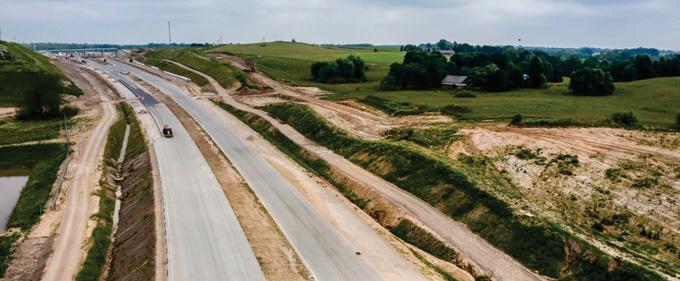試す 金 - 無料
KALININGRAD ORIGINS OF RUSSIA'S EXCLAVE
History of War
|Issue 147
Formerly the Prussian stronghold of Königsberg, since 1945 this region has been a Soviet, then Russian, foothold in Eastern Europe

The fact that seven NATO nations lie within range of a single battery of Russian missiles underlines the importance of Kaliningrad in the 21st century. But it was never intended to be so. Denmark, Estonia, Germany, Latvia, Lithuania, Poland and Sweden are all regretting the day when the former East Prussian city of Königsberg was absorbed into the Soviet Union, and subsequently Russia. It is a reminder that amid the unquiet tangle of East European states the shadow of the Second World War still looms large, with a sense of unfinished business, even 80 years after VE-Day.
Kaliningrad began life as the minor East Prussian settlement of Twangste, where a castle and anchorage in a lagoon facilitated the supply westwards of valuable amber, pine resin and tar via Baltic shipping. Growing in importance and wealth over the next 500 years, the settlement achieved prominence in 1255 as the main garrison of the Teutonic Knights. The knights named their bastion Königsberg (the King's Mountain) in honour of their patron and backer, King Ottokar II of Bohemia. In 1454-55 and again between 1466 to 1657 its name changed to Królewiec (by which moniker the Poles still know it) when acquired by the Kingdom of Poland and later the Polish-Lithuanian Commonwealth.
From 1340 it had become a prominent Hanseatic trading and ship-building port, ice-free throughout the year, from which Baltic timber, salt, grain, furs and coal sailed westwards to England and the Netherlands, and huge quantities of fish and finished European goods were imported. Königsberg was later the coronation city of the Duchy of Prussia, before that state's capital moved to Berlin in 1701, then subsequently the first city of East Prussia for the next 244 years.
このストーリーは、History of War の Issue 147 版からのものです。
Magzter GOLD を購読すると、厳選された何千ものプレミアム記事や、10,000 以上の雑誌や新聞にアクセスできます。
すでに購読者ですか? サインイン
History of War からのその他のストーリー

History of War
FLYING INTO HISTORY ENOLA GAY
The first atomic bomb was dropped on Japan by an American B-29 bomber, preceding the country's capitulation in WWII. Here navigator Theodore Van Kirk recalls his experience of the day that changed history
7 mins
Issue 149

History of War
PUTIN'S SUBMARINE FLEET
From the Cold War to modern operations, the threat beneath the waves has been steadily building, and could be about to escalate
4 mins
Issue 149

History of War
ON SILVER WINGS
THIS MOVING BIOGRAPHY OF AN 'UNKNOWN' WWII RAF FIGHTER ACE CHARTS DESMOND IBBOTSON'S CAREER, THE STORY ENDING WITH A TWIST WHEN HIS REMAINS ARE DISCOVERED IN ITALY IN 2005
2 mins
Issue 149

History of War
CAMBODIA vs THAILAND ROOTS OF THE BORDER WAR
July 2025's clashes are the latest in a long frontier conflict that has gone unresolved, from the era of warrior kings to smart bombs
4 mins
Issue 149

History of War
TASK FORCE GREMLIN
At the end of WWII the Japanese Imperial Army Air Force was conscripted into the Royal Air Force in Southeast Asia
7 mins
Issue 149

History of War
RAF RETURNS TO NUCLEAR
Nearly 30 years after giving them up, the RAF is poised to reacquire air-dropped nuclear weapons
3 mins
Issue 149

History of War
NO MORE NAPOLEONS
A MAGISTERIAL SURVEY OF NAVAL POWER AND POLICY
2 mins
Issue 149

History of War
STALIN'S BLITZKRIEG
In the final month of WWII, the Red Army launched a devastating strike into Manchuria, opening a new front with Japan and threatening invasion of the Home Islands
10 mins
Issue 149

History of War
BALACLAVA POCKET WATCH
This William IV silver timepiece and its owner survived the Charge of the Light Brigade at the Battle of Balaclava
1 mins
Issue 149

History of War
THE END OF THE SPY?
Human intelligence is a dying art, but it is still crucial for security agencies worldwide
3 mins
Issue 149
Listen
Translate
Change font size
